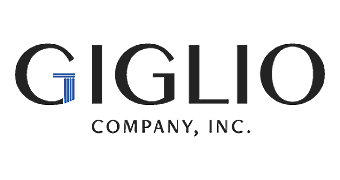Business Development is Not an “Add-on” Responsibility
Are you feeling the pressure? Many of my clients are. When they were hired, they didn’t have any or much business development responsibilities. That was handled by “other people.” However, as the business world evolves, more and more companies are tasking employees with generating new business. So, on top of their day-to-day tasks that have consumed all of their time to date, they now have to figure out how to bring more business on board. It’s an “add on” responsibility that creates a lot of pressure. Sound familiar?
The problem I see time and time again is that these folks aren’t equipped to manage new business development. Some of that can lay at the feet of the executives who created the “get new business” mandate. They haven’t given their teams the right tools. However, that’s only half the issue. The other is that these associates don’t have the right behavior that would make this work easier and allow them to be successful.
The Tools for Business Development
Being thrown to the wolves in terms of business development without the proper tool set is unfair. You’re not alone if you’ve asked yourself, “How can they expect me to get new business when I’ve never had to do that before?” Regardless, they are asking you to do it so, what’s your answer? I suggest you check your tools to see if you have the following:
Training:
Nurturing a new client relationship is challenging for anyone without proper training. You didn’t learn to drive without instruction? Someone had to teach you to write your name, throw a baseball, cook a meal, etc. So, business development requires instruction and mentoring. Ask the person who gave you this new “opportunity” if you can get some training. And if you are in a management position where you are asking your directs to take on business development, be sure that they have had or will get some proper training. The time you invest upfront will deliver a better-prepared representative who will produce long-term results.
A Systematic Approach:
Business development is not a “by the seat of your pants” activity. You need a systematic approach so that you can easily work through steps that will give you the highest likelihood of success. This system should be written down and committed to memory. Doing proper research, learning about the client’s industry hot points, pre-determining possible pain points, having an arsenal of probing questions, scheduling follow-up calls…they are all part of the process that you must have as you move into this new area of business development.
Products/Service Knowledge
How much do you really know about your company, its products and services? If you have surface level knowledge, in business development that’s not knowledge at all. Clients, especially new ones, expect that you are a source of in depth understanding about your company and its offerings. I’m always amazed at how little some people really understand about their company and the benefits it offers potential customers. Do your internal homework!
The Behaviors of Business Development
Just having the tools, however, is not enough. You must have the right behavior to use those tools. Here are the key behaviors that you’ll need to be successful:
Desire:
If you don’t want to do business development, you will fail. You will find reasons to put it off. You will find people and circumstances to blame for why you aren’t successful. You will get frustrated and distracted easily. While you may not have many or any of the tools listed above, they can be obtained…but you have to want them. If you don’t, perhaps it’s time to have a heart-to-heart with your boss and find another position that better suits your, and their, needs.
Empathy:
Very often I’ve seen people ask about their client’s business but only skim the surface in terms of knowledge gathering. You have to be empathetic, a good listener. In short, you have to care. When you discover a pain point, you have to stay in it and find out what is really at the heart of the issue.
For example, during a role-playing training exercise recently, a client of mine was speaking with a CEO. The CEO said, “We really have to trim the fat to be competitive.” My client said, “Ok. And what are your marketing goals for the upcoming year?”
WAIT! I want to hear more about trimming the fat, don’t you? What he needed to do was delve further, even using my tried-and-true question, “Really?” Getting your clients to open up about what is really driving their decision making will allow you to provide a recommendation that’s far more relevant, timely and purposeful.
Ambiguity:
Yes, I said one of the tools you have to have in business development is a systematic approach. However, you cannot be so rigid that you miss opportunities to understand your client better. In the above example with the CEO, my client was running through a list of questions we had developed. The questions are important but you must be flexible and have enough ambiguity so that you don’t pre-determine how things are going to go. Let conversations flow so that you get better intel for your recommendations.
Ok…so you never thought you would have to do business development and now you do. Get over it! You can do this if you have the proper tools and behaviors. Your boss has faith in you so, turn that into motivation to get out there and be successful!
What tools and/or behavior are you missing? Let me know. -sg




